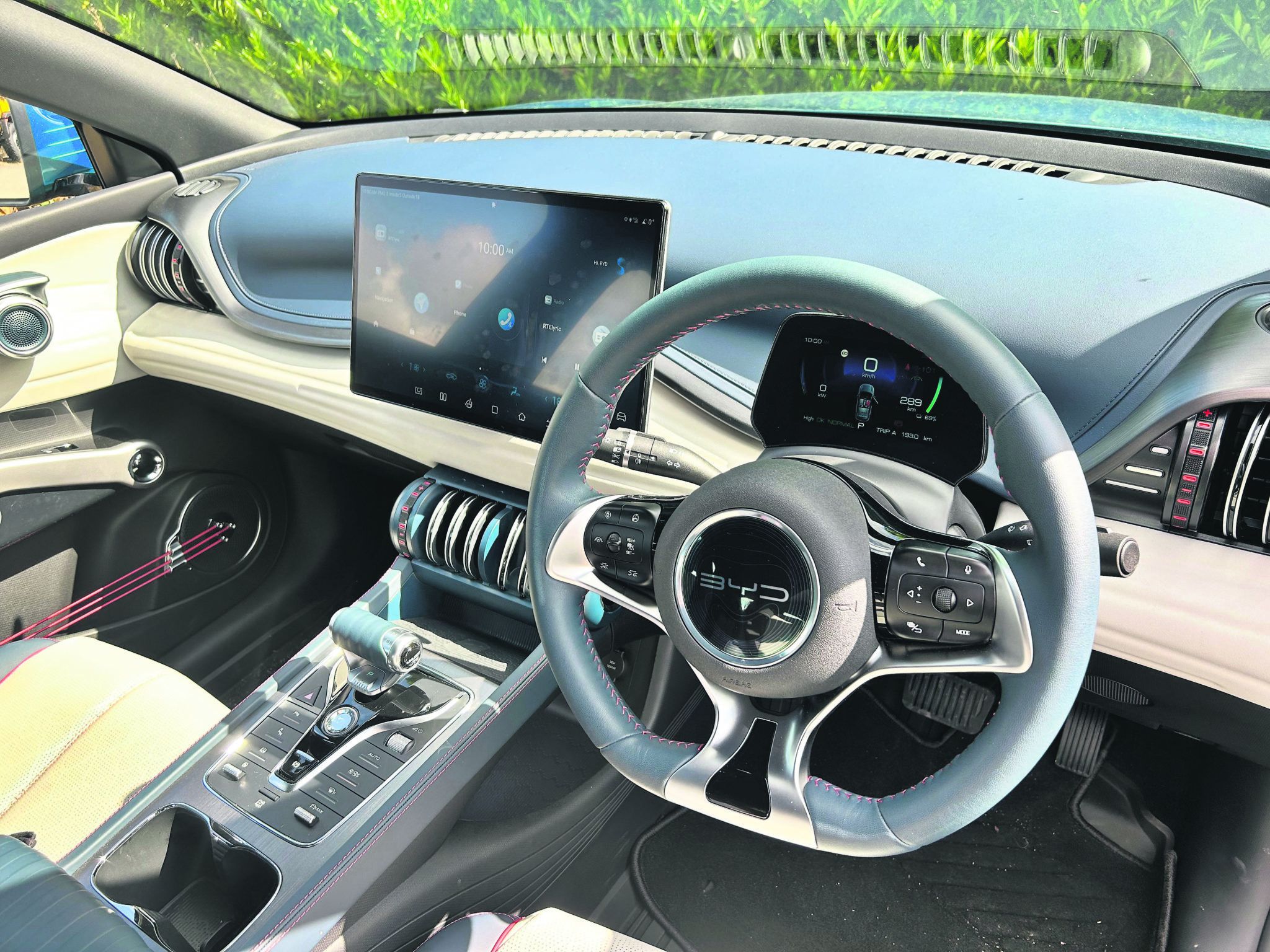BY BRIAN BYRNE
If there’s a strong sense of design competence in the Chinese electric car maker BYD, it should be no surprise.
Their head of design is a German, Wolfgang Egger, under whose direction the highly successful Alfa Romeo 156 of the late 1990s was developed, and the stunningly beautiful 8C Competizione from the same brand in 2007. From there he went to head Audi Group Design which included responsibility for Lamborghini, and in 2016 was attracted to BYD to create their new design identity.
Today he oversees a team of more than 600 designers in multiple locations around the world from BYD’s newly-opened global design centre in Shenzhen, China.

All that may not seem relevant to a car review, but it is the underpinning of the first BYD model introduced to Ireland, the Atto 3, by Motor Distributors Ltd (MDL), who also hold the distribution rights for Mercedes-Benz.
Impressed by the car at its launch some weeks ago, after a more substantial time with it I’m quite convinced that BYD makes a very appropriate stablemate for MDL beside the German luxury brand.
The Atto 3, first of three BYD models which will be introduced to Ireland between now and the end of the year, is a tad shorter than VW’s ID 4 and its equivalents, but is wider. Its styling as a compact family SUV hatch is smart, with clever detailing and understated body sculpting giving it an individuality in a format where it’s hard to ring changes. The very edgy wheels design adds to the good looks.

Inside, there’s no subtlety. A swirling dashboard design, strong shapes to the air vents, and a large infotainment screen all push to dominate. At first experience it is something of a rush, but very quickly you get used to it. Even the quirky 3-string banjo shape to the door storage spaces raises a smile ... and some music — they’re tuned doh-re-mi.
The info screen in front of the driver is small — a la the VW ID range, so we know where that came from — but with strong graphics and clear information. The centre console also has more than a hint of Audi in its switchgear layout, including a proper volume control. Transmission shift is by a very distinctive T-handle, vestigial of some American performance pony cars of the 1970s.
The width helps to make the Atto 3 a very roomy car, as also does a longish wheelbase providing good knee space for rear passengers. The front seats in the review car had a one-piece design, with integrated head restraints that aren’t adjustable.
For me, that caused one small problem — whatever way the lower part of the restraint cushioning is built, it nudged annoyingly against a vertebra at the back of my neck. Mr Egger, please note.

Despite the interior styling initial rush to impact, I very quickly came to appreciate the extremely high level and sense of quality all the way through this car. Materials, fit, and finish are top drawer. Buttons, switches, and knobs all have a premium feel and action. The large centre screen — I would personally prefer it to be a bit smaller — could rotate from landscape through to portrait, according to driver preference. The screen itself, unlike my recent experiences with some from other Chinese brands, has good graphics and touch response, and fairly decent menu management.
Since BYD began life as a maker of rechargeable batteries, the drive-train technology is pretty well all the carmaker’s own, including their ‘blade’ type battery.
A FWD vehicle with 204hp on stream, the 1.8-tonne car is actually quite nippy if you need that. It is also very silent on the move, except below 25km/h when a pedestrian warning emits something of a banshee wail. All the usual driving assist functions are part of the package and there are three grades.

The rated range is 420km, with my commute consumption of 13.2kWh/100km suggesting that normal daily use would give a somewhat better figure.
I was left wondering if, within MDL, the BYD offering might even compete with their Mercedes-Benz EVs? That thought is its own recommendation.
VERDICT
What I liked: Starting the day with music in mind
Price: From €37,128










